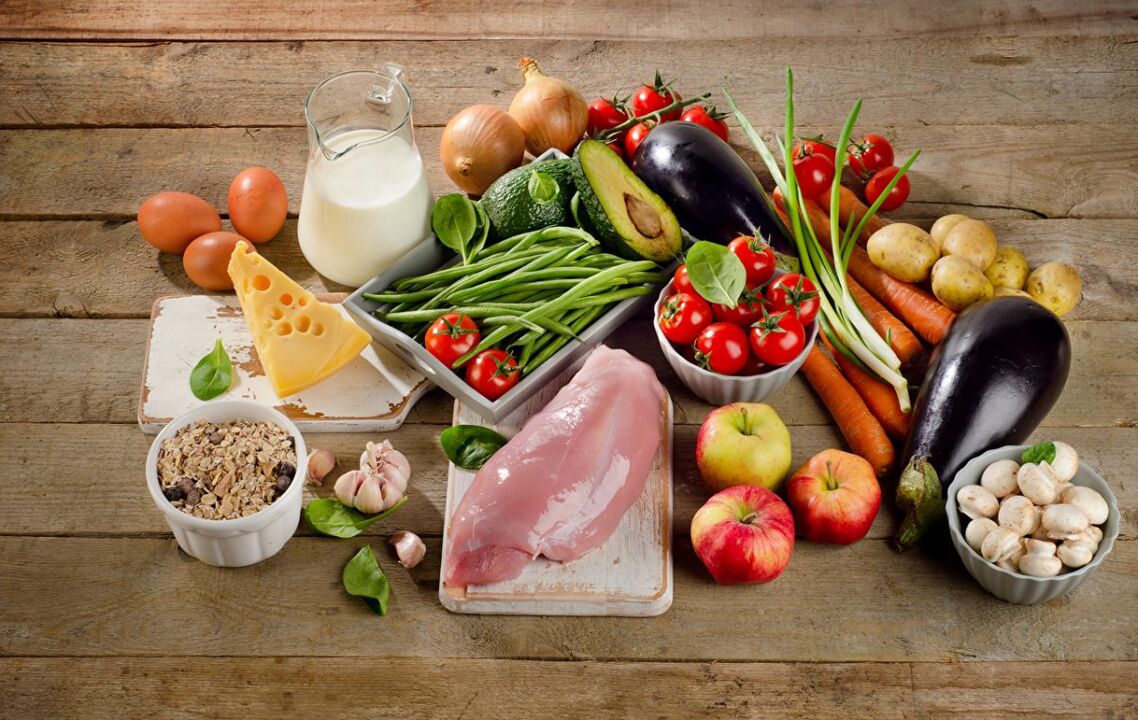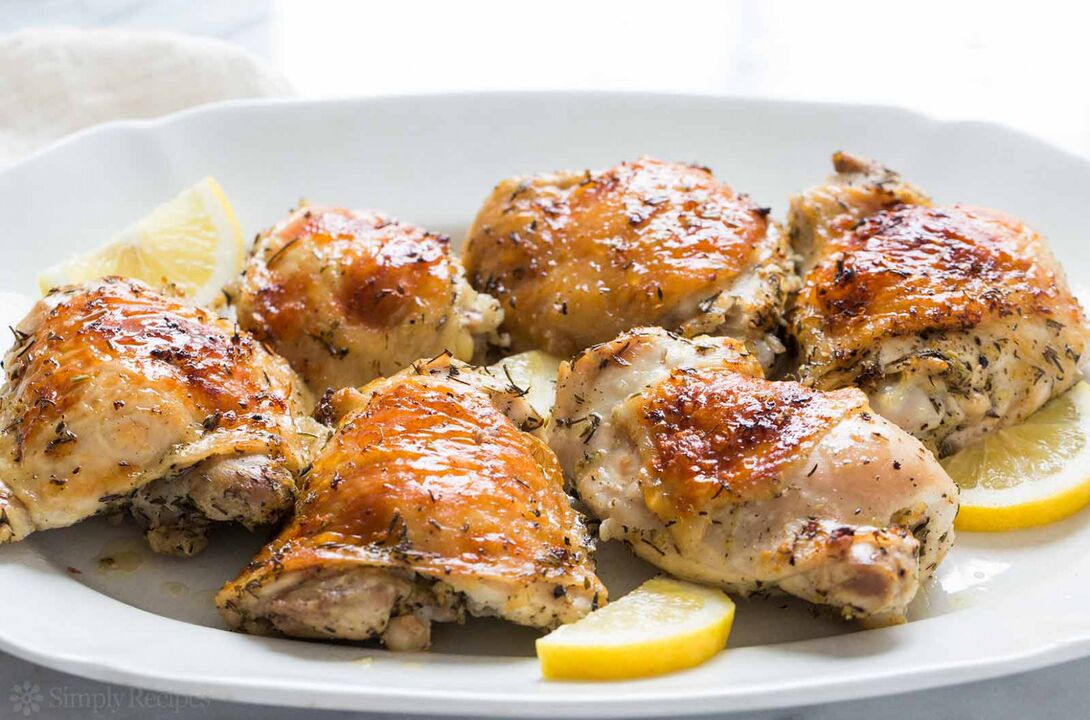A gluten-free diet is a healthy diet in which all foods containing gluten are eliminated from the diet. The diet is prescribed for diseases of the endocrine and nervous systems, as well as pathology of the gastrointestinal tract.
Gluten (gluten) - a complex of plant proteins (prolamins, glutenins) found in wheat, oats, rye and other cereals.
Who is the diet recommended for?

The use of a gluten-free diet is a necessary condition for the treatment of the following conditions:
- gluten intolerance;
- gluten intolerance (severe and atypical);
- irritable bowel syndrome;
- autism, epilepsy, multiple sclerosis;
- Anemia in children under 3 years of age.
The use of gluten-containing foods for diseases of the gastrointestinal tract and neurological pathologies can lead to the following consequences:
- This causes chronic inflammation of the small intestine, as a result of which pathogenic bacteria and toxins enter the bloodstream.
- Disrupts the balance of intestinal microflora and leads to the proliferation of pathogenic bacteria.
- Disrupts digestive processes as a result of adhesion of villas to the walls of the small intestine, which is designed for the absorption and assimilation of proteins, fats and carbohydrates.
- The immune system causes autoimmune diseases by secreting antibodies to gluten molecules that attack not only the gastrointestinal tract but also gluten-like proteins in the cells of the thyroid gland, heart and nervous system. Thus, autoimmune thyroiditis, type 1 diabetes, dermatitis, infertility and early menopause occur.
The presence of gluten-containing foods in the diet is manifested by persistent urinary incontinence (constipation, diarrhea), flatulence, frequent edema, caries, as well as ulcers in the mucous membranes of the mouth and frequent rashes on the skin.
In most cases, gluten intolerance causes iron deficiency anemia, which is characterized by constant fatigue, brittle nails, hair loss and weight loss.
List of permitted and prohibited products
To maintain a gluten-free diet, two categories of foods are excluded from the diet: those that are high in gluten (such as wheat bread) and those that are high in gluten (such as mayonnaise, ketchup, etc. ).
In a gluten-free diet, the following foods are eliminated from the diet:
- cereals, particularly wheat, rye, oats, and barley;
- products made from the flour of these cereals, including bread, lavash, cakes, cookies, loaves of bread;
- cereals (oats, rolled oats, bulgur, pearl barley);
- it is a grain field;
- products containing small amounts of wheat flour (broth cubes, soy sauce, buckwheat noodles, sausages and canned food, crab sticks, mayonnaise, ketchup, tea bags, yogurts, ice cream);
- chocolate, store jam, caramel;
- kvass, beer and other alcoholic beverages made from cereals;
- coffee with taste and additives, decaffeinated coffee;
- Products that contain "traces of gluten" due to production, namely table vinegar, food starch, semolina, some types of cheese, dry spices and condiments, etc. b.
Due to the presence of hidden gluten in the diet, the diet is ineffective, because the inflammatory processes in the intestine do not stop even with a small amount of gluten in the food. Carefully study the composition of the product in the package. Some manufacturers label their labels as "Gluten Free. "
If you are on a gluten-free diet, you can include gluten-free foods in your diet, namely:
- vegetables and fruits;
- beans, soybeans;
- buckwheat, sorghum, quinoa, flax, rice;
- home-made milk and dairy products;
- meat and fish;
- seafood;
- vegetable and animal fats;
- yeast, spices, soy sauce.
Weekly gluten-free diet menu

For a week, the menu sample should consist of 4 or 5 meals every 2-3 hours. A gluten-free diet can consist of foods made from grains, vegetables, meat, and cheese, and fruits and berries are used as snacks.
Monday
- breakfast: cottage cheese with banana and fruit, tea;
- Lunch: buckwheat soup with meatballs, pilaf, tomato salad;
- Lunch: apples, 25 grams of walnuts;
- Dinner: cut with vegetable salad.
Tuesday
- Breakfast: rice porridge, coffee with soy milk;
- Lunch: broccoli puree soup, gluten-free pork chops;
- Lunch: banana, 5 almonds;
- Dinner: fruit and cottage cheese.
Wednesday
- Breakfast: cottage cheese and banana cheese pancakes, cocoa in almond milk;
- Lunch: tomato soup, meatballs in soup, vegetable salad;
- Lunch: 3 tangerines, pumpkin seeds;
- Dinner: boiled duck, fresh vegetable salad.
Thursday
- Breakfast: omelet with herbs and cheese, tea;
- Lunch: Meatballs and rice soup, gluten-free bread, fish cooked with broccoli;
- Lunch: 150 grams of raspberries, walnuts;
- Dinner: banana and cheese cakes, sour cream.
Friday
- Breakfast: corn cakes with banana puree, compote;
- Lunch: fish soup, grilled vegetables, chicken cooked with spices;
- Lunch: homemade yogurt and fruit puree;
- Dinner: casserole with cheese and fruit sauce.
Saturday
- Breakfast: pumpkin porridge, coffee;
- Lunch: borsch, beef cabbage, green salad;
- lunch: assorted fruits;
- Dinner: cottage cheese with honey.
Sunday
- Breakfast: hummus, tea with carrots and bell peppers;
- Lunch: cottage cheese okroshka, fish casserole, salad;
- Lunch: strawberries, currants, raspberries;
- Dinner: French meat, pepper and tomato salad.
For the child

A gluten-free diet is necessary for children with gluten intolerance, autism and gastrointestinal disorders. For additional indications (for example, iron deficiency anemia and other pathologies of digestion) a gluten-free diet is prescribed for children under 3 years of age.
Gluten-free food for children can be not only healthy, but also tasty, because despite the fact that it does not include a number of flour products and cereals, the child's diet includes a lot of vegetables, meat and fish.
Sample 3-day menu for children:
Day 1
- Breakfast: omelet with rice porridge, banana;
- Lunch: cheese cakes with fruit, compote;
- Lunch: borsch with sour cream and gluten-free croutons, dried fruit desserts;
- Lunch: chicken, fresh vegetable salad;
- Dinner: homemade cakes with honey and milk.
2 days
- Breakfast: a bowl of sweet rice with bananas and strawberries;
- Lunch: homemade noodles, compote;
- Lunch: buckwheat soup with meatballs, fruit jelly;
- Lunch: fruits;
- Dinner: cottage cheese with walnuts and honey.
Day 3
- Breakfast: pumpkin porridge, compote;
- Lunch: fruit jelly, gluten-free buns;
- Lunch: soup with broccoli, potatoes with pumpkin and herbs, barbecue, apples;
- Lunch: cottage cheese with orange, compote;
- Dinner: minced meat and rice, homemade tomato juice.
An important condition for proper digestion and movement of food through the gastrointestinal tract during a gluten-free diet is the use of vegetable fiber from fruits, vegetables and grains.
To lose weight
Weight loss with a gluten-free diet is achieved by eliminating fast carbohydrates from the diet. In this case, it is necessary to take into account the caloric content of foods.
A gluten-free diet for weight loss can help you lose 2-3 pounds per week, if optimal daily calorie intake is optimal, there is no overeating and the following principles are followed:
- Eat 4 meals a day without snacks;
- Drink 1, 5-2 liters of water per day;
- there is a sufficient number of fresh vegetables and dairy products;
- Limit consumption of cereals to 200 grams (raw) and high-calorie nuts to 25 grams;
- Do not rule out the use of sugar, pure fructose and various sugar substitutes, as all of these foods increase appetite;
- Do not eat 3 hours before bedtime.
Since sugar and white flour lead to rapid weight gain at the end of the diet, the use of baked goods, sweets and carbonated water with sugar should be limited.
Delicious recipes

The menu of gluten-free foods usually consists of meat, vegetables and dairy products. To expand your diet, you can use gluten-free recipes and baked goods using a variety of gluten-free flours.
Chicken breast cutlets with mashed potatoes
For cooking you need 1-2 chicken, salt, black pepper, frying oil, 0, 5 kg of potatoes, 50 grams of sour cream for dressing.
Peel a squash, grate it and add water and salt. In this case, wash the breast, cut into thin strips on the strands and cut each piece on both sides, salt and pepper.
Drain the water from the pot with the prepared potatoes, add sour cream and puree with a blender. Put the mashed potatoes on a plate, sprinkle with dill and start cooking the cutlets.
Bake the chopsticks in a hot pan with butter and fry the meat on both sides for 2-4 minutes. But the meat should not be dried, because the cutlets will be dry and hard.
As soon as the chicken is cooked, it is garnished and served.
Slowly bake the rice flour sponge cake in the oven
To make a biscuit, you need 6 eggs, 180 grams of sugar, 150 grams of rice flour, vanilla, lemon peel, butter or vegetable oil.
First, separate the whites from the yolks, beat the yolks with sugar and vanilla for 4-5 minutes, melt the sugar and beat vigorously until the mixture doubles. Then, in a separate bowl, whisk until thick foam for 8 -10 minutes. Then add lemon zest and rice flour to the yolks and mix well with a spoon. Gradually add the proteins to the dough until the mass is homogeneous.
For the multicooker, the pan is greased with oil, the dough is poured and the baking mode is set for 40-50 minutes, depending on the model of the multicooker. Check the readiness of the biscuit with a match.
Gluten-free cornmeal buns
To make muffins, you need 170 grams of corn flour, 90 grams of corn starch, three eggs, 100 ml of milk, 100 grams of butter, 150 grams of sugar, a tablespoon of baking powder and vanilla.
First you need to mix the dry ingredients: flour, starch, baking powder. Then, in a separate bowl, beat the eggs, sugar, and vanilla until the sugar is melted and foamy, then add the softened butter and warm milk and beat again. Then, you need to mix all the ingredients and pour into molds until smooth.
Bake muffins in a preheated oven at 180 degrees for 20 minutes.
For a gluten-free diet to be effective, it is necessary to completely eliminate forbidden foods and follow the principles of a lifelong diet.














































































